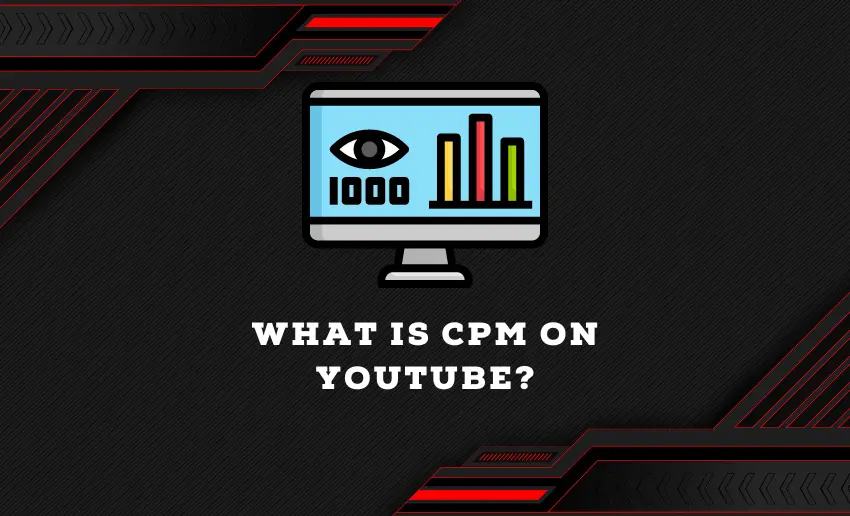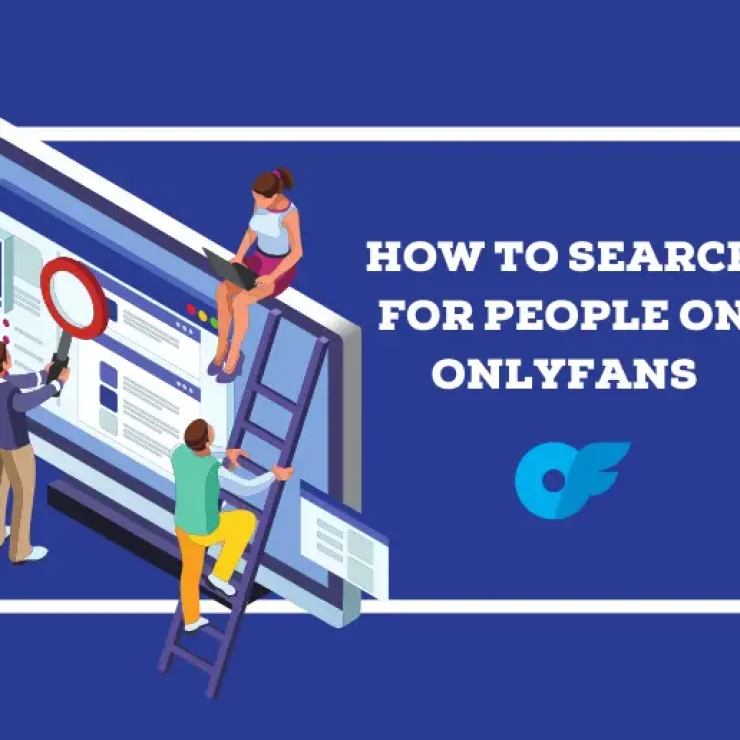Every YouTuber dreams of achieving monetization on the YouTube platform. And although it’s possible for all, understanding the technical terms used on the platform concerning monetization is crucial. Amidst all the terms, having a deep understanding of what CPM is on YouTube is practically on everyone’s mind.
Understanding CPM gives you a sneak peek into the earning potential of your YouTube content. It’s not just a metric; it’s the key to maximizing your revenue and turning your passion into a paycheck.
In this guide, I’ll talk extensively about the CPM YouTube meaning and all it entails. From explaining what CPM means to unlock strategies to pump up your earnings, this article is your pass to YouTube’s financial game.
What does CPM mean on YouTube?
CPM, or Cost Per Mille, measures the cash flow per thousand views your videos generate through ads. It reflects the amount advertisers are willing to pay for every thousand times their ad gets shown on your video.
This number hinges on various factors like your audience demographics, video content, and advertisers’ demand. So, a higher CPM means more earnings for you, while a lower one might mean it’s time to tweak your strategy.
Factors affecting YouTube CPM
As earlier stated, CPM is dependent on several factors ranging from:
1. Content niche
The type of content you create significantly impacts your CPM. Some niches attract more advertisers willing to pay higher rates. For instance, finance, business, and technology often command higher CPMs due to their appeal to advertisers targeting specific audiences seeking these topics.
2. Geographical location
The location of your audience matters in determining CPM. Ad rates vary across regions. Viewers from countries with strong economies or higher advertiser demand generally yield higher CPMs. Channels with audiences primarily from these regions tend to have higher earning potentials.
3. Audience demographics
Advertisers value specific demographics, influencing CPM rates. Channels with audiences matching advertiser preferences regarding age, gender, and interests can attract higher-paying ads. Content tailored to these demographics tends to fetch better CPMs due to increased ad relevance.
4. Seasonal and trend factors
CPMs can fluctuate with seasons or trends. Ad rates might soar during holidays or peak shopping seasons when advertisers spend more. Additionally, trending topics or events might attract higher ad bids, affecting CPM rates temporarily.
5. Ad format and placement
Different ad formats (skippable, non-skippable) and placements (pre-roll, mid-roll) affect CPM rates. Some formats might yield higher engagement and better rates, while others could impact viewer retention, influencing overall CPMs.
6. Ad campaign budgets
Advertiser budgets for campaigns influence CPM rates. Higher campaign budgets mean increased bidding for ad space, potentially leading to higher CPMs. Advertisers with larger budgets can drive up rates for ad placements on your videos.
How do you calculate YouTube CPM?
Figuring out your YouTube CPM is easy and can be done quickly with just a few steps. This CPM formula is straightforward:
CPM = (Total Earnings ÷ Total Views) × 1000
Divide your total earnings from ads by the total number of views your videos racked up. Then, multiply that number by 1000 to get your CPM. For instance, if you earned $500 from 100,000 views, then your CPM is:
($500 ÷100,000) × 1000 = $5
If you want to earn $1000 with the same audience size, you might aim for a CPM of $10.
Is YouTube CPM important?
Yes, YouTube CPM holds significant importance for creators on the platform. This metric serves as a pivotal tool for creators to:
1. Gauge revenue potential
CPM on YouTube is like a crystal ball revealing your video’s earning power. It shows how much money you’ll pocket for every thousand views. Understanding this helps you predict potential earnings based on audience size and ad performance. A higher CPM means more income per view, while a lower one might signal areas to enhance for better revenue.
2. Measure Ad performance
By tracking CPM, you can assess how well ads perform on your channel. It reflects the advertiser demand for your content and audience. A higher CPM implies advertisers find your audience valuable, potentially leading to more lucrative ad deals. Analyzing this metric helps tailor content to attract premium advertisers, boosting overall revenue.
3. Optimize monetization strategies
CPM acts as a compass guiding your monetization efforts. Understanding this metric helps creators tweak their content, audience targeting, and ad placements to maximize earnings. It aids in deciding which content resonates better with advertisers and viewers, enabling adjustments to enhance CPM and overall revenue.
4. Revenue comparison
Comparing CPM rates across videos or periods allows creators to identify high-performing content. It helps pinpoint videos that generate more income per view, revealing content types or topics that attract better-paying ads. This insight assists in crafting future content strategies to replicate success and boost overall earnings.
5. Audience targeting insights
CPM provides valuable insights into audience demographics that attract higher-paying ads. Creators can leverage this information to tailor content to audiences that are more appealing to advertisers. Understanding which demographics yield better CPM rates allows for targeted content creation, potentially increasing revenue.
6. Negotiating power
A high CPM empowers creators when negotiating sponsorships or collaborations. It showcases the value of your channel’s audience to potential partners, giving leverage in securing better deals. Advertisers invest more in channels with a proven track record of higher CPM, translating into increased revenue opportunities.
7. Revenue diversification
Diversifying revenue streams beyond ads becomes more viable with a deeper understanding of CPM. Lower CPM rates may prompt creators to explore alternative monetization avenues like merchandise, memberships, or sponsored content. This diversification strategy safeguards against fluctuations in ad revenue, ensuring a more stable income flow.
7 Steps to increase your YouTube CPM
Now that you deeply understand what CPM is on YouTube, your next thought might be: can I improve on my YouTube CPM? Thankfully, you can do a few things to help increase YouTube CPM. They include:
1. Targeting higher-paying niches
Focusing on lucrative niches or topics advertisers seek can boost your CPM. Identify content areas with high demand or where advertisers are willing to pay more to reach specific audiences.
Research trending subjects or niche markets within your expertise that align with advertiser interests. Tailoring your content to these niches can attract premium ad rates, elevating your CPM.
2. Enhancing video quality and engagement
Upgrading video quality, storytelling, and production values can captivate viewers and increase engagement. Quality content retains audiences, encouraging longer watch times and more ad views.
Engaging videos with compelling narratives or interactive elements entice viewers to stay longer, positively impacting your CPM. Invest in improving visuals, audio, and storytelling to create content that keeps viewers hooked.
3. Audience targeting for better Ad relevance
Understanding your audience demographics helps tailor content to attract ads that resonate with them. Create content catering to specific audience interests, increasing the relevance of displayed ads.
Align your content strategy with the preferences of your target audience to enhance ad engagement. Relevant ads attract higher bids, potentially elevating your CPM by delivering ads your audience finds valuable.
4. Build a loyal subscriber base
A loyal subscriber base boosts your video views and watch time, key factors in CPM. Subscribers tend to engage more consistently, leading to longer watch sessions and more ad views.
Encourage subscriptions by offering value, engaging with your audience, and delivering consistent quality content. A strong subscriber base can significantly impact your CPM positively.
5. Encourage longer watch times
Longer watch times directly impact ad views, affecting your CPM. Crafting engaging content that keeps viewers watching for extended periods can boost your CPM.
Implement storytelling techniques, cliffhangers, or compelling hooks early in videos to retain audience attention. Longer watch times signal content quality to YouTube’s algorithm, potentially resulting in better ad placements and higher CPM.
6. Leverage analytics to understand viewer behavior
Utilize YouTube analytics to decipher what content resonates best with your audience. Insights into viewer behavior, such as popular video segments, peak engagement times, or audience retention rates, guide content creation.
Tailoring content based on these insights optimizes viewer experience, leading to higher ad engagement and improved CPM.
7. Experiment with Ad placements and formats
Exploring different ad placements and formats can impact ad engagement and CPM. Test various ad types (skippable, non-skippable, mid-roll) and placements (pre-roll, post-roll) to find what works best for your audience without compromising their viewing experience. Experimentation allows you to discover optimal ad setups that maximize revenue while maintaining viewer satisfaction.
What is the average YouTube CPM?
The average YouTube CPM varies widely based on multiple factors. However, a generally acceptable value of the average CPM on YouTube can range between $2 to $12 per thousand views. Keep in mind that this figure isn’t fixed and can fluctuate significantly. While the average CPM might fall within a certain range, individual channel CPMs can deviate significantly based on influencing factors.
Which niches have the highest CPM on YouTube?
Certain niches attract higher CPMs because they appeal to advertisers seeking specific audiences or content types. Here are some niches known for having higher CPM rates:
1. Finance and Business
Content related to finance, investments, stocks, entrepreneurship, and business strategies often commands high CPMs. Advertisers in these sectors are willing to pay more to reach audiences interested in financial products, services, or educational content.
2. Technology and Gadgets
Tech-related content, covering reviews, tutorials, or discussing gadgets, apps, or software, attracts higher CPMs. Advertisers targeting tech-savvy audiences often pay premium rates to showcase their products or services.
3. Health and Wellness
Content focusing on health, fitness, nutrition, and well-being tends to have higher CPMs. Advertisers in the health industry seek audiences interested in fitness products, supplements, healthy living, and healthcare services.
4. Real Estate and Property
Channels discussing real estate trends, property investment, home improvement, or interior design often command higher CPMs. Advertisers in the real estate sector target audiences interested in buying, selling, or improving properties.
5. Legal and Insurance
Content related to law, legal advice, insurance, or personal finance can have higher CPMs. Advertisers in these industries seek audiences looking for legal counsel, insurance options, or financial planning advice.
Does YouTube pay me all my CPM earnings?
YouTube pays creators a portion of their CPM earnings, not the entire amount. So, while your earnings in terms of CPM might show a higher figure, creators only get paid a fraction ( This is where the RPM metric comes into play).
For example, if a creator’s YouTube video runs an ad that pays $7 for every thousand views. If the video gets 100,000 views, YouTube earns $700 from that ad. YouTube takes 45% of that ad money, which is $315, leaving the creator with the remaining 55%, totaling $385 for you to take home.
In the End
Understanding CPM (Cost Per Mille) on YouTube is crucial for creators aiming to maximize their earnings. It signifies the revenue earned per thousand views and is influenced by content niche, audience demographics, and ad performance. Higher CPMs indicate increased earning potential.






